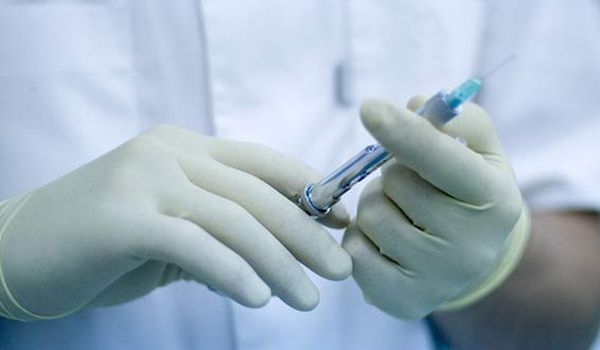HPV Vaccine Slashes Rate of Infected Teen Girls

The human papillomavirus (HPV) vaccine appears to be having an early impact in the United States, reducing the percentage of teen girls infected with certain strains of the virus by more than half, a new study suggests.
After the vaccine was introduced in 2006, there was a 56 percent decrease in the rate of teen girls infected with the four HPV strains included in the vaccine (HPV 6, 11, 16, and 18), the study from the Centers for Disease Control and Prevention (CDC) found.
This decrease was greater than expected, given the low HPV vaccination rate. Between 2007 and 2010, only about a third of girls in this age group reported receiving at least one dose of HPV. The full series comprises three doses given over six months. [See HPV Vaccine: What If You Miss a Dose?]
"This report shows that HPV vaccine works well, and the report should be a wake-up call to our nation to protect the next generation by increasing HPV vaccination rates," Dr. Tom Frieden, director of the CDC, said in a statement.
Each year, HPV causes about 27,000 cancers, most commonly cervical cancer in women (19,000 cases) and oropharyngeal (throat) cancers in men (8,000 cases), the CDC says. Although the vaccine does not protect against all strains of HPV, it does protect against four strains, including the two strains (16 and 18) thought to cause about 70 percent of cervical cancers.
The study included information from 4,150 women ages 14 to 59 who were tested for HPV between 2003 and 2006, and 4,253 who were tested between 2007 and 2010.
Among girls ages 14 to 19, the percentage testing positive for at least one of the four HPV strains in the vaccine decreased from 11.5 percent in the group tested before 2006, to 5.1 percent in the group tested after 2006. No decrease was seen in other age groups.
Sign up for the Live Science daily newsletter now
Get the world’s most fascinating discoveries delivered straight to your inbox.
Because the virus is spread through sex, the CDC recommends the vaccine be given before teens become sexually active. Girls and boys should be vaccinated at ages 11 or 12, the CDC says. (Those who were not vaccinated as adolescents are recommended to get the vaccine in their 20s, up to age 26.)
The larger-than-expected decrease in HPV prevalence could have been caused by several factors, including "herd immunity" — protection of unvaccinated people that occurs because a critical portion of the population has been vaccinated.
"This decline is encouraging, given the substantial health and economic burden of HPV-associated disease," said study researcher Dr. Lauri Markowitz of the CDC.
Changes in sexual behavior could also affect HPV prevalence, but the study found similar rates of sexual activity among teen girls before and after the vaccine was introduced.
The study appears in the June issue of the Journal of Infectious Diseases.
Follow Rachael Rettner @RachaelRettner. Follow LiveScience @livescience, Facebook & Google+. Original article on LiveScience.com.

Rachael is a Live Science contributor, and was a former channel editor and senior writer for Live Science between 2010 and 2022. She has a master's degree in journalism from New York University's Science, Health and Environmental Reporting Program. She also holds a B.S. in molecular biology and an M.S. in biology from the University of California, San Diego. Her work has appeared in Scienceline, The Washington Post and Scientific American.











